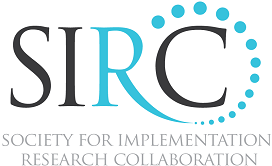Breakout K – October 14, 2011 (MC: Sue Kerns)
1. Who Benefits from Evidence-Based Treatment Policies? An Analysis of Moderators of Impact
Presentation Slides Video of Presentation
Presenter: Amanda Jensen-Doss, PhD
Authors: Amanda Jensen-Doss, Leticia D. Osterberg, University of Miami, J. Scott Hickey, Harris County Mental Health and Mental Retardation Authority, and Duan Zhang, University of Denver
Abstract: At least 45 state mental health agencies are implementing evidence-based practices, although little is known about the impact of these efforts. The Texas Department of State Health Services has a policy, Resiliency and Disease Management (RDM), requiring the exclusive use of evidence-based treatments in its clinics. This study examined the impact of RDM using administrative data for 3,260 youths treated in one county. Hierarchical linear modeling with propensity score matching examined changes in service use, symptoms, and functioning. Analyses indicate that, relative to youths served prior to RDM, post-RDM youths received more treatment, were less likely to be hospitalized and had better outcomes on some therapist-reported functioning measures, although differences were small in magnitude. These findings suggest this significant state mental health system overhaul resulted in small changes in outcomes. To inform revisions to this policy and other similar efforts, analyses examining child (e.g., ethnicity) and provider (e.g., degree) moderators of the impact of RDM are being conducted. These analyses will examine whether there are groups of clients or providers for whom this policy was particularly helpful, or perhaps harmful. The results of these analyses and their implications, taking into account the implementation strategies employed in RDM, will be discussed.
2. Effectiveness of the Wraparound Process as Implemented in a “Real World” System: A Translation 2 Study
Presentation Slides Video of Presentation
Presenter: Eric Bruns, PhD
Authors: Eric Bruns, Michael Pullmann, April Sather, University of Washington, and Ramona Brinson, University of Nevada, Las Vegas
Abstract: Translation 2 research studies examine factors associated with implementation and outcomes of empirically supported interventions as applied to real world practice. This paper presents results of a translation 2 study of the wraparound process, an intensive, individualized care coordination intervention for children with serious emotional disturbance and their families. Ninety-four youths with SED were randomized to either wraparound (n=51) as delivered by the state mental health system or intensive case management (ICM; n=43) as delivered by a private mental health organization. Groups were compared over three waves of data collection on fidelity, services received, organizational context, and youth and caregiver outcomes, using hierarchical linear modeling (HLM). The wraparound group received more mean hours of care management, in-home treatment, and community-based services, and caregivers reported greater empowerment. Youth in wraparound initially demonstrated better residential outcomes; however, there were no differences in functioning or symptoms. Poor implementation fidelity and less favorable organizational context were found for the wraparound group. Results speak to the difficulties in taking wraparound to scale in the absence of favorable organizational and system conditions and/or fidelity controls, as well as the importance of measuring fidelity, organizational, and service variables in effectiveness studies of complex interventions such as wraparound.
3. The Effects of Behavioral Health Reform on Safety-Net Institutions: A Mixed-Method Assessment in a Rural State
Presentation Slides Video of Presentation
Presenter: David Sommerfeld, PhD
Authors: Cathleen E. Willging, Pacific Institute for Research and Evaluation, David H. Sommerfeld, Gregory A. Aarons, University of California, San Diego, and Howard Waitzkin, University of New Mexico
Abstract: We undertook a 4-year, multi-method study of a major managed behavioral health care reform in the predominantly rural state of New Mexico. In July 2005, the state government contracted with a single for-profit managed care corporation to administer all publicly funded behavioral health services in an effort to reduce both cost and bureaucracy. We utilized mixed-method analytical approaches (e.g., qualitative and quantitative) to examine how this reform affected organizational dynamics within behavioral health safety-net institutions, agencies that historically have cared for socially and economically disadvantaged populations, and studied its differential impacts on personnel (e.g., direct service providers, administrators, and support staff) working in rural agencies vs. urban agencies. More specifically, we conducted participant observations, semi-structured interviews, and quantitative surveys with personnel (n=325) in 14 safety-net institutions 9 months after implementation, and again 18 months and 36 months later. We found that the reform created considerable challenges for these agencies, particularly in the early years. Qualitative data analysis indicated that the challenges were largely related to the new information technology system introduced by the managed care corporation and burdensome processes to enroll clients, procure service authorizations, and submit claims. These challenges led to payment delays, which compromised the financial status of agencies, their ability to provide services, and worker morale. Qualitative and quantitative data analyses suggested that personnel employed by rural agencies were more likely than their urban counterparts to assess the reform’s impact on their work environments negatively. Findings underscore the need to shore up support for rural agencies by attending to the disadvantages they face in terms of workforce capacity, technological infrastructure, and fiscal solvency. The effects of large-scale systems change on these fragile agencies also deserve careful monitoring.
